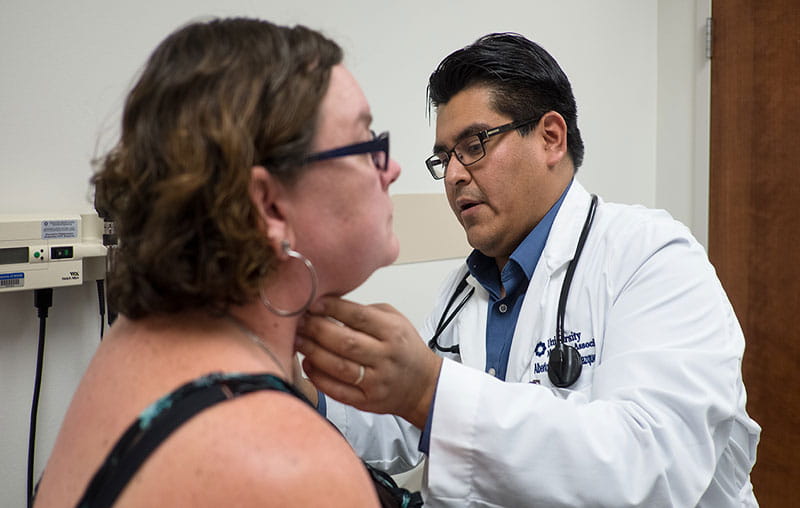Although it happens, rest assured that children developing cancer is very rare; only about 19 out of every 100,000 kids up to the age 19 get cancer.
Most of the time, symptoms turn out to be just a common illness, such as a virus. Even so, cancer is the leading cause of death from disease for kids, and we at University Health System take your concerns seriously. So how can you tell when the situation might be more serious? It can be difficult, as the symptoms of childhood cancer are often subtle and hard to detect.
Parents and other caretakers who see the child on a daily basis, rather than a family physician, are usually the first people who notice something is wrong—when symptoms persist, when nothing else is helping. The earlier the diagnosis, the better, in terms of treatment options. But a later diagnosis isn’t always bad; it just depends on the disease.
Common types of cancer in children and their symptoms
The most common childhood cancer is acute lymphoblastic leukemia, a cancer of the blood. Acute lymphoblastic leukemia occurs when the child’s bone marrow makes too many immature lymphocytes, which are one kind of white blood cell. The symptoms are subtle, so it’s important to pay attention if anything seems unusual. Bruises are a common symptom of this type of leukemia, but children are often prone to bruising simply because they’re kids. They might also bleed more than expected or be more susceptible to infections because normal white blood cells aren’t working as well as they should.
Brain tumors are also a common cancer in children, and there’s a wide range of symptoms. Common ones are headaches, sudden vision problems, behavioral changes or vomiting with no known cause. Some of the more dramatic symptoms are seizures, difficulty walking, numbness or slurred speech.
Bone tumors can also have subtle symptoms. For example, an athlete might feel sore and think it’s sports-related. But when the situation doesn’t improve or if it doesn’t respond well to normal therapies, that’s when it’s time for diagnostics.
An eye cancer called retinoblastoma can be identified through family photos. When you would expect to see red eye in the picture, retinoblastoma would cause the eyes to be white, which is the tumor reflecting back into the camera.
What to do if you suspect your child has cancer
Don’t wait too long to take your child to see a doctor if normal treatments aren’t resolving the situation. For example, it’s time to visit your child’s pediatrician when:
- antibiotics to treat a bacterial infection don’t seem to reduce symptoms within a couple of days
- symptoms of a virus don’t improve within a week or so
- muscle aches and pains that seem like a sports injury last more than a week or two
- your child has a seizure or you notice your child has white eyes in a photo (bring the photo to show the doctor)
The pediatrician will want diagnostics, such as blood tests or imaging tests, like an X-ray, MRI or CT scan. Depending on what those tests show, your child’s doctor will talk about the next step.
Even if your child is diagnosed with cancer, try not to panic. Of course it feels scary, but survival rates are tremendous, especially in children. Many times, we can cure cancer easier than we can treat diabetes. The survival rates of children with acute lymphoblastic leukemia is well above 90 percent, and for standard- and low-risk acute lymphoblastic leukemia, it’s greater than 95 percent. Averaging all childhood cancers, the survival rate is nearly 85 percent.
It’s important for parents to not feel like they’re being dismissed when they talk with a doctor about their concerns. If you don’t get an answer you’re satisfied with, talk to another physician.
The doctors at University Health will be happy to discuss any concerns you have about your child. You can reach our Pediatric Blood and Cancer Center at 210-743-2300.




